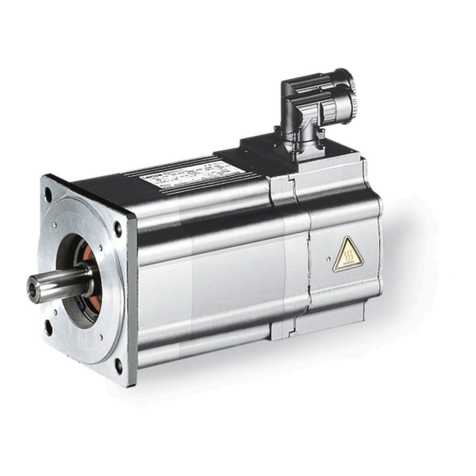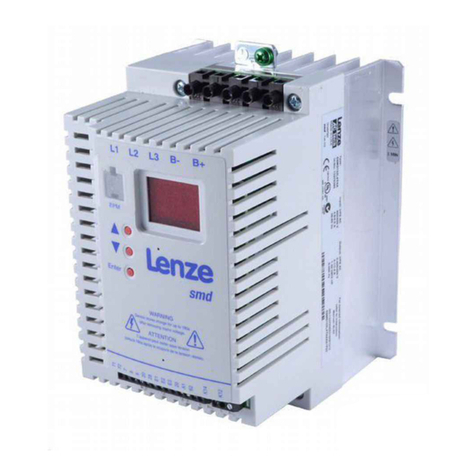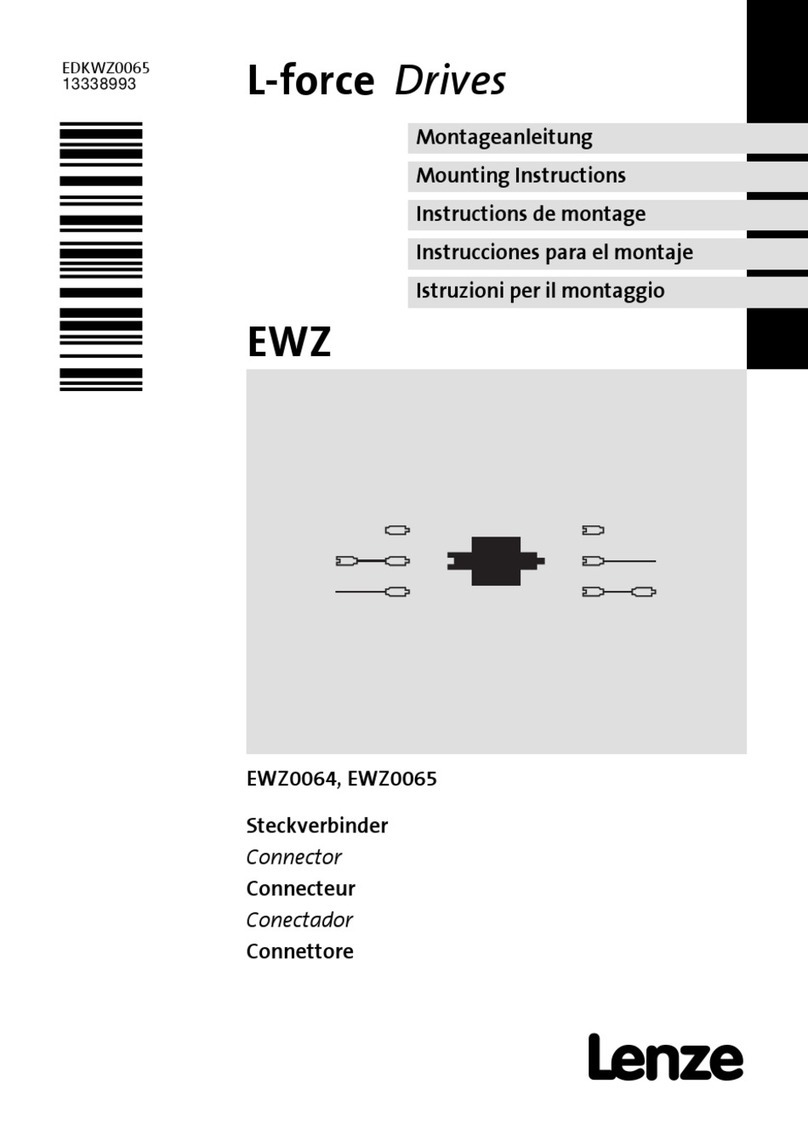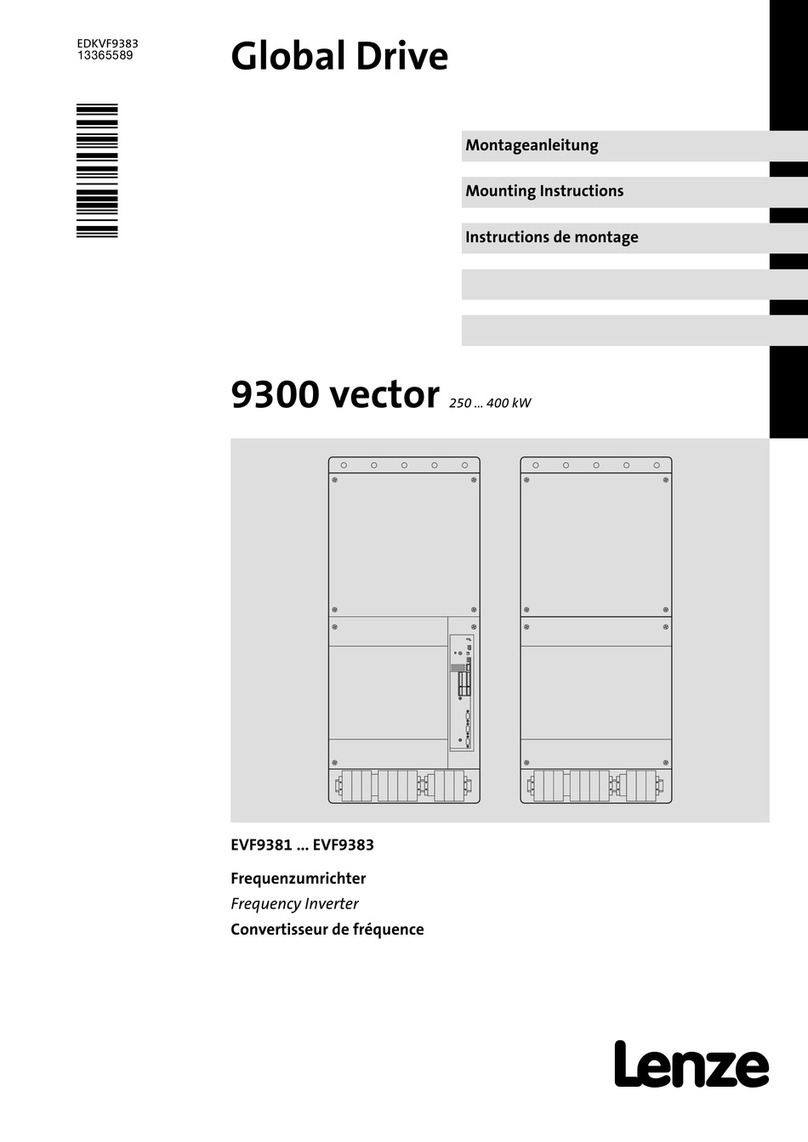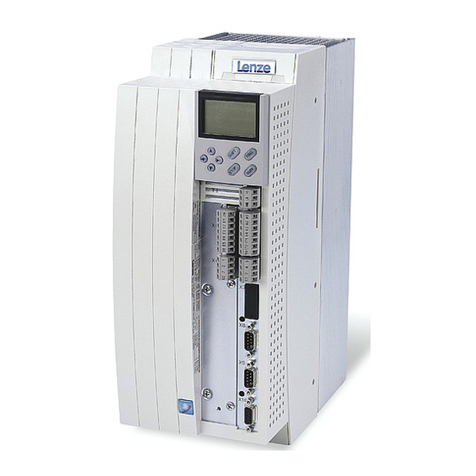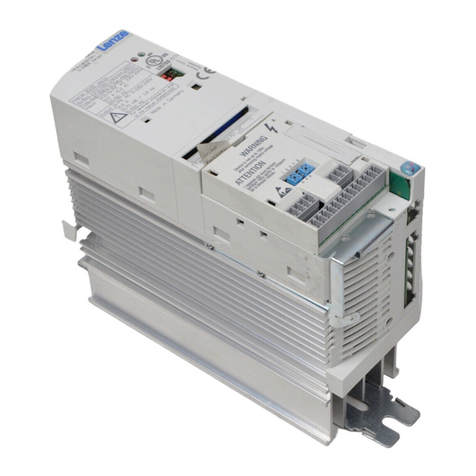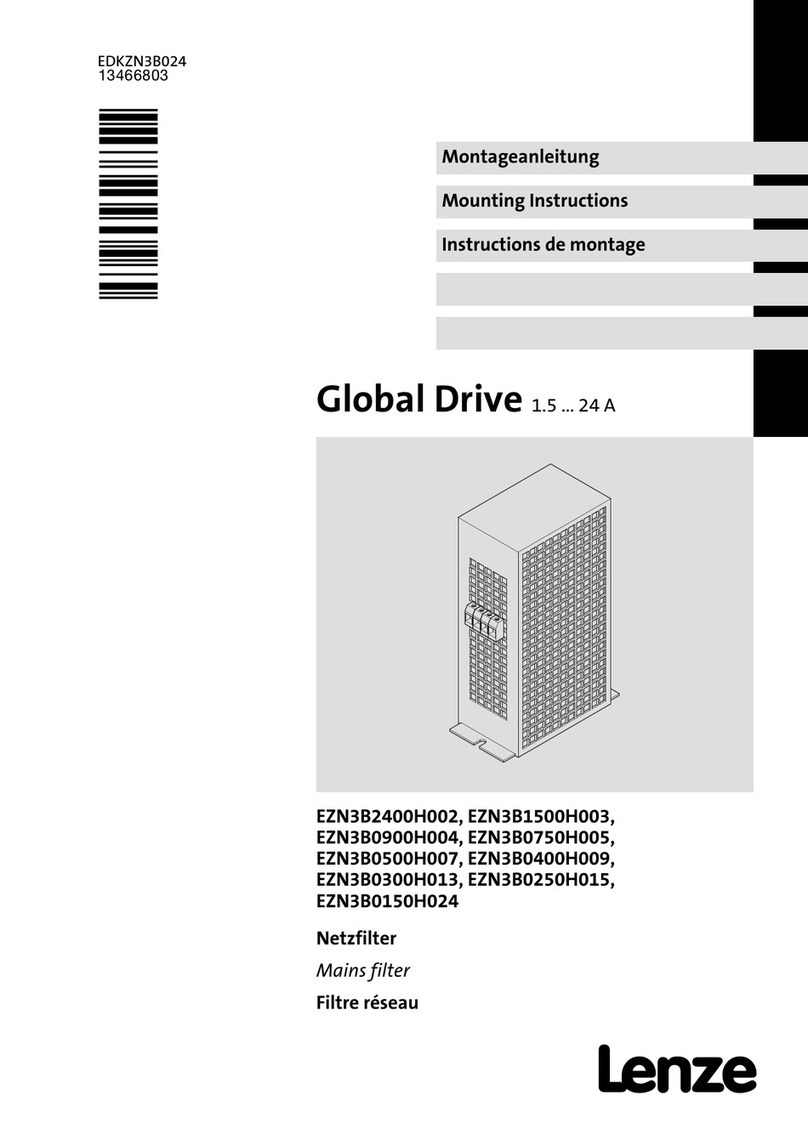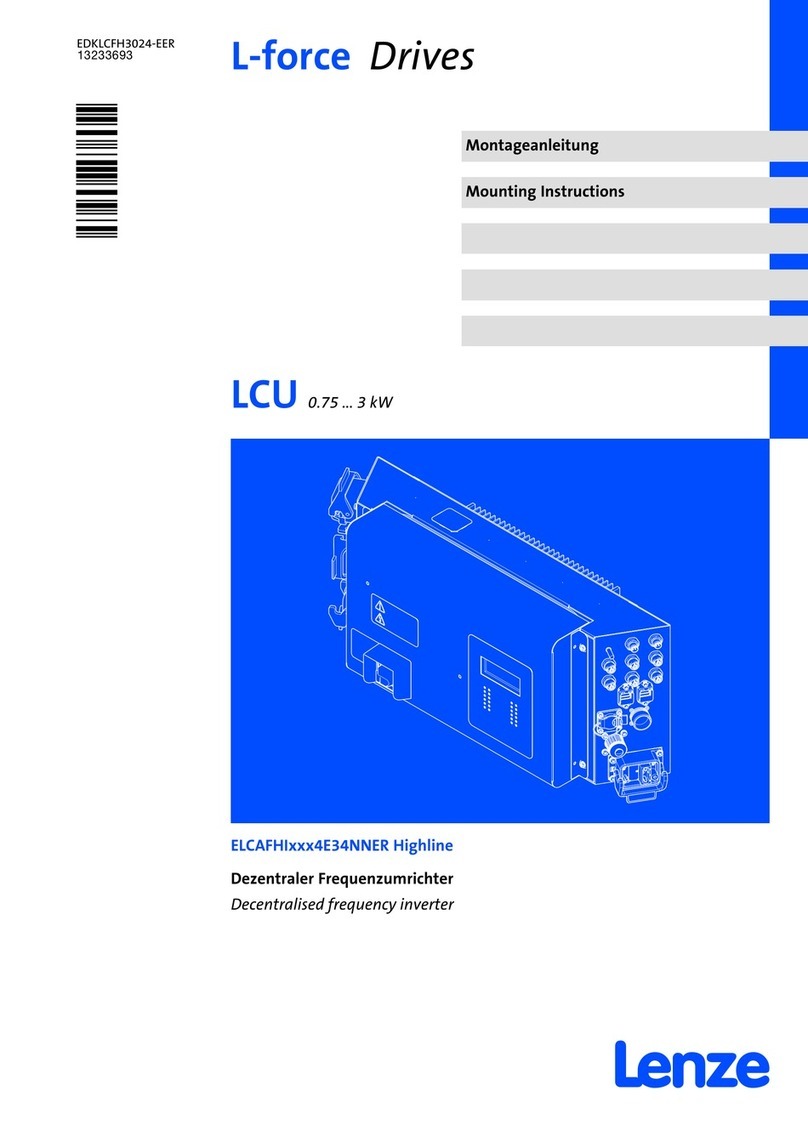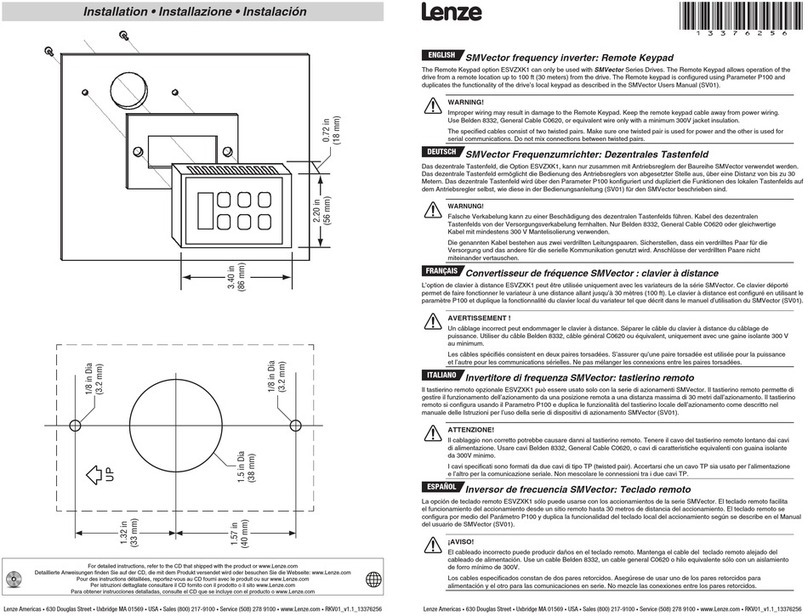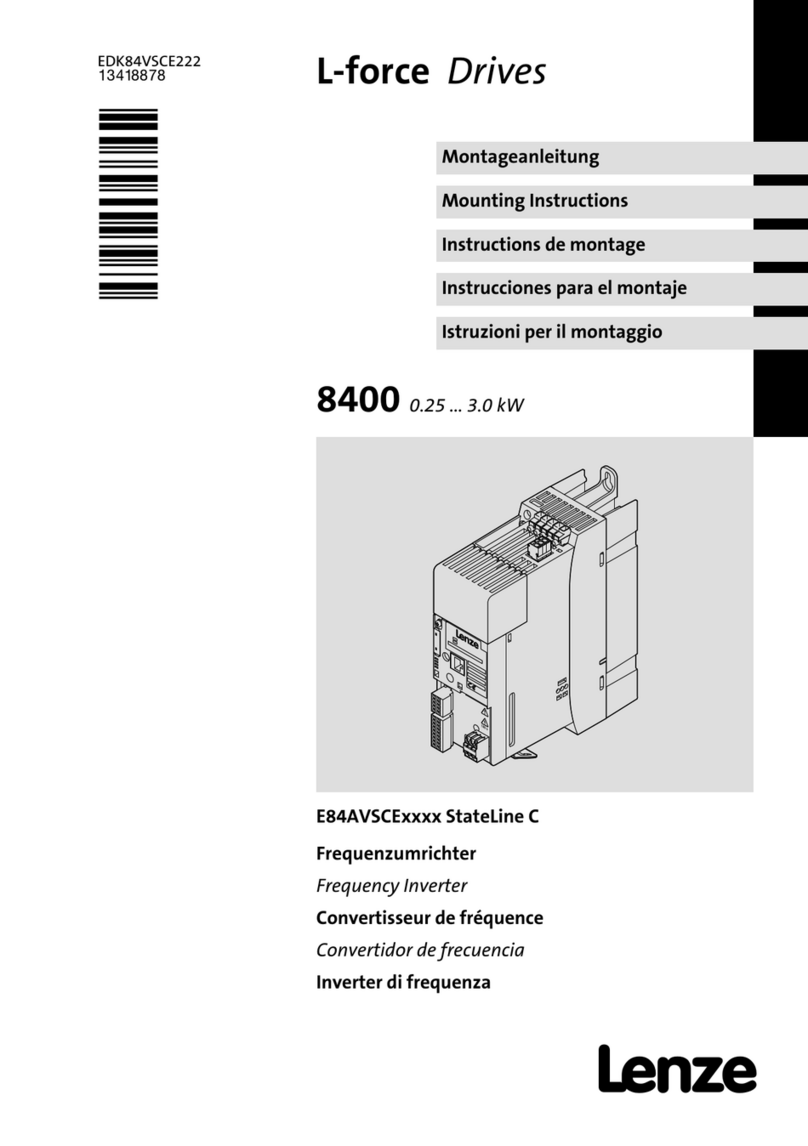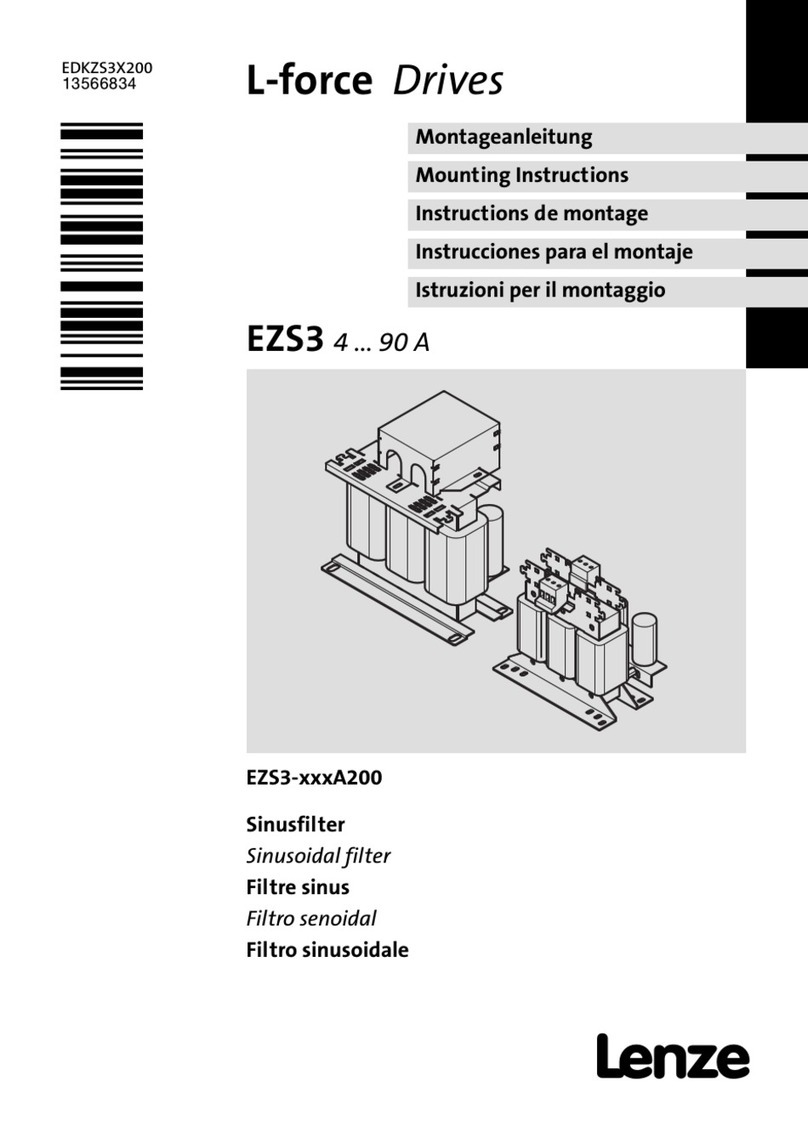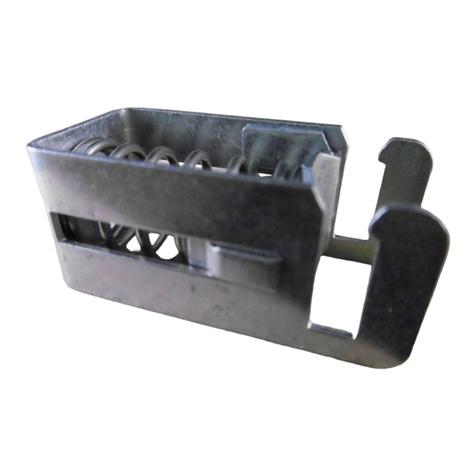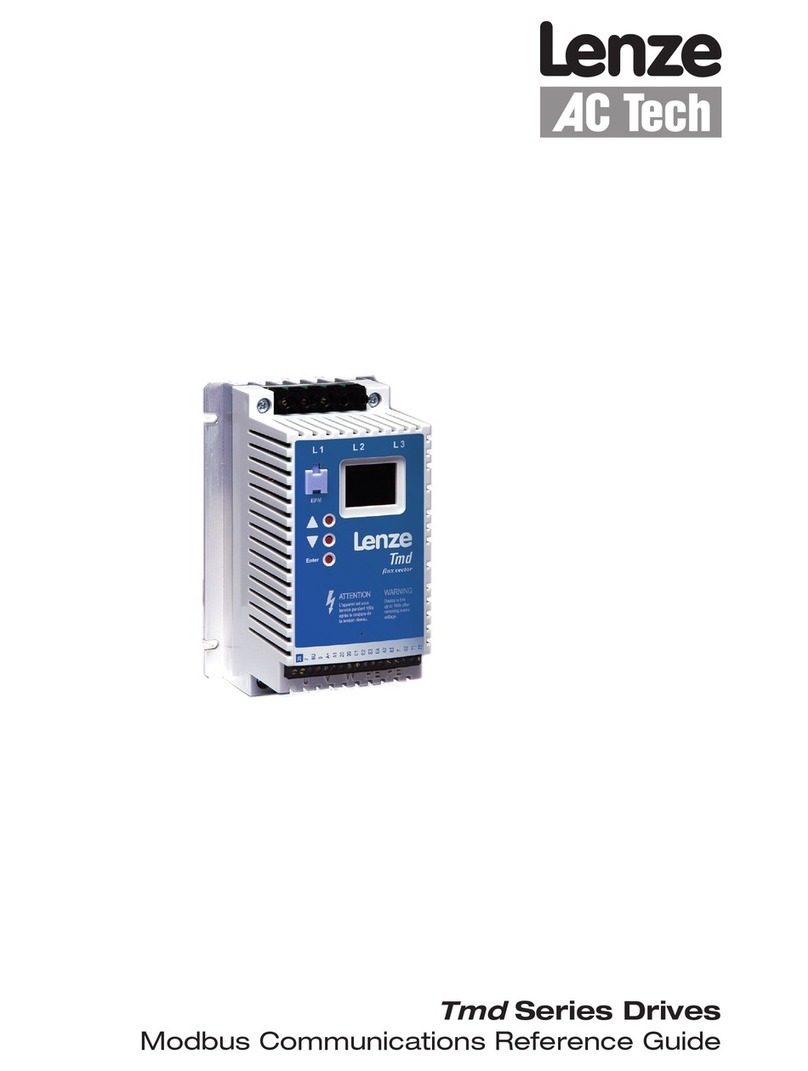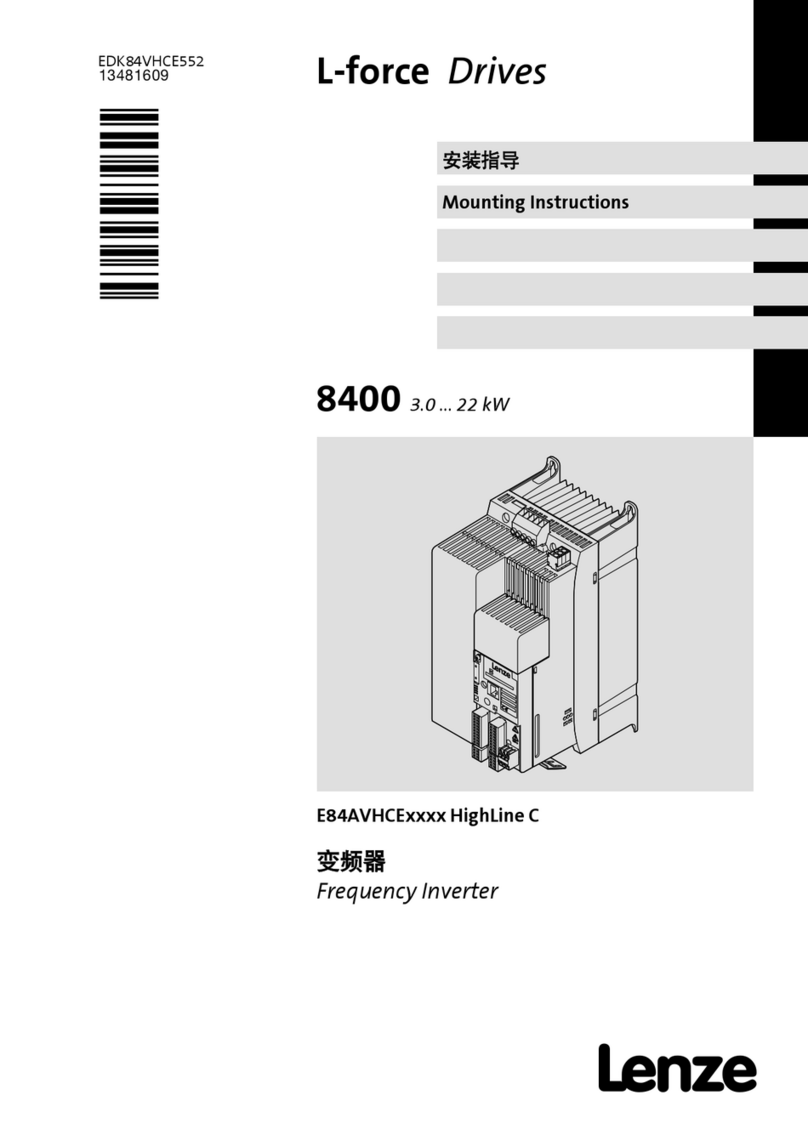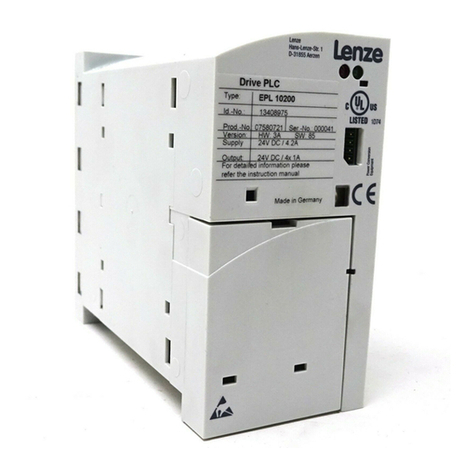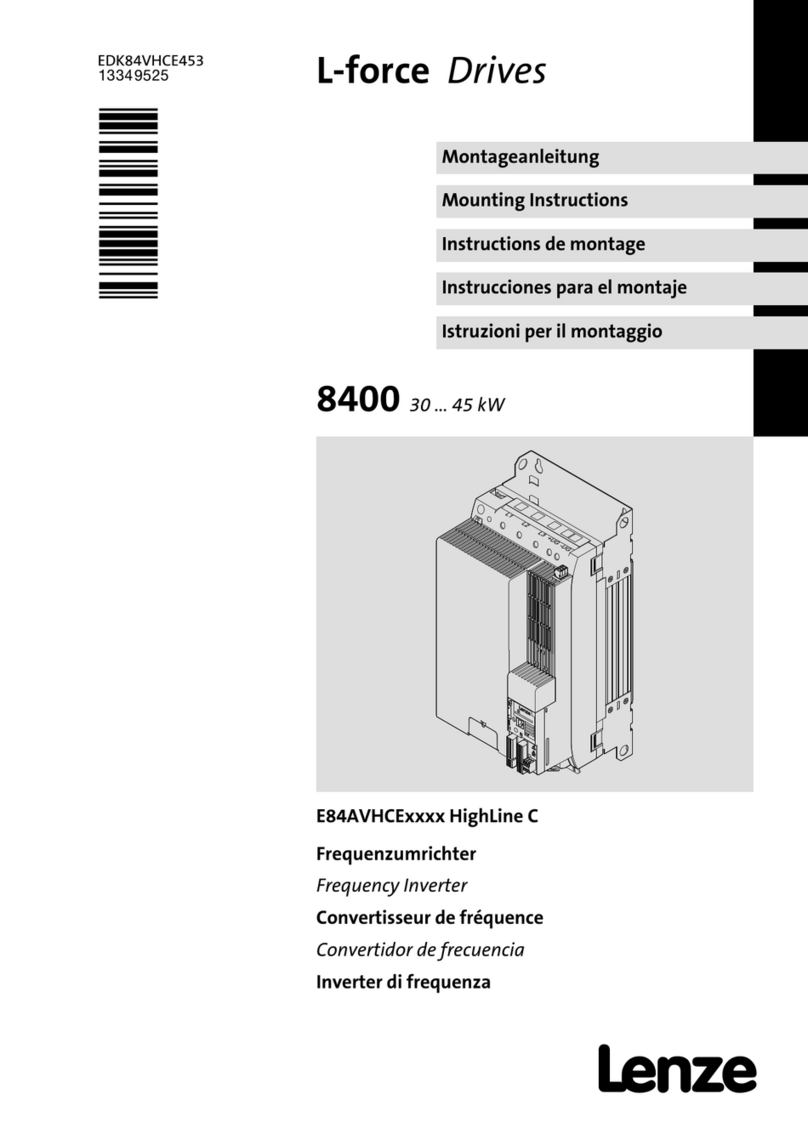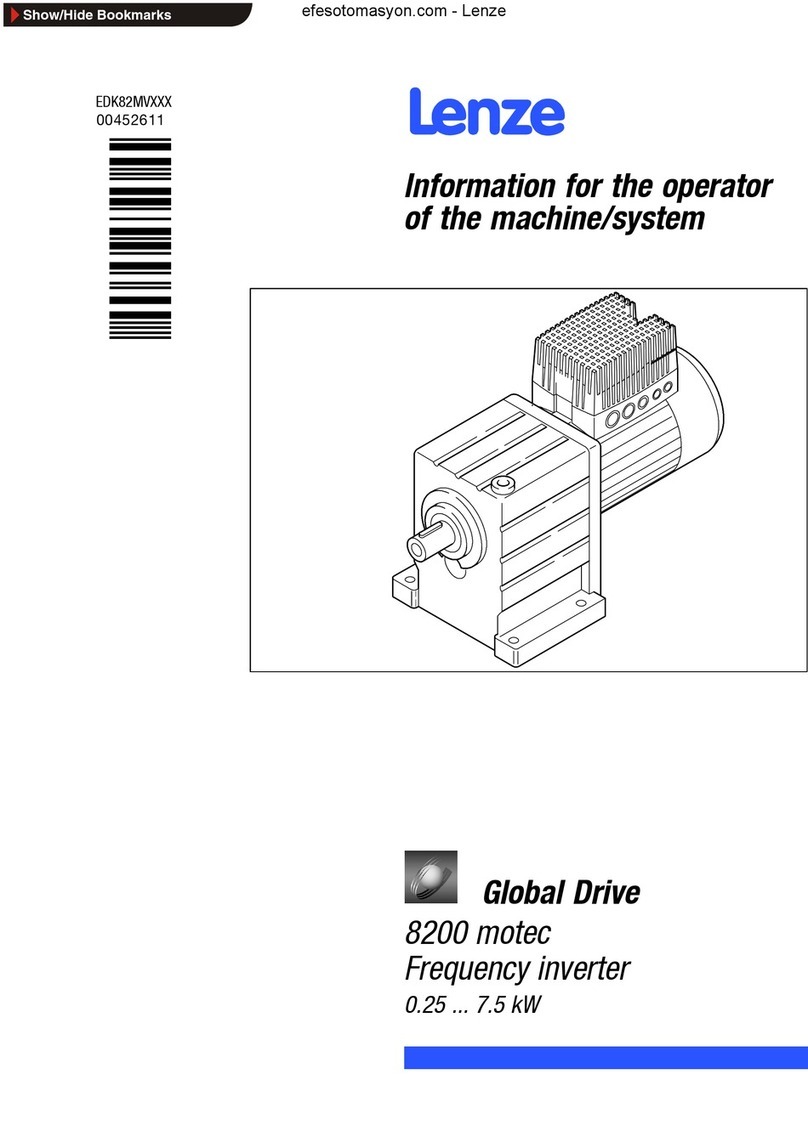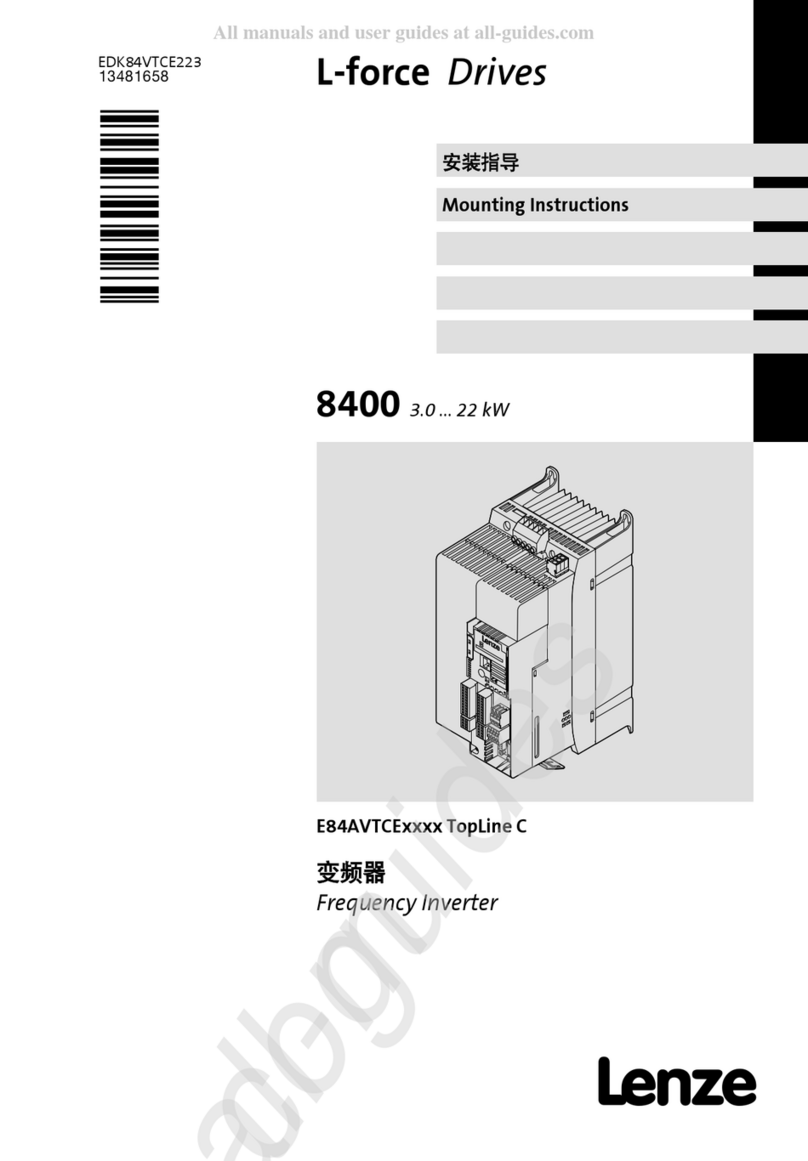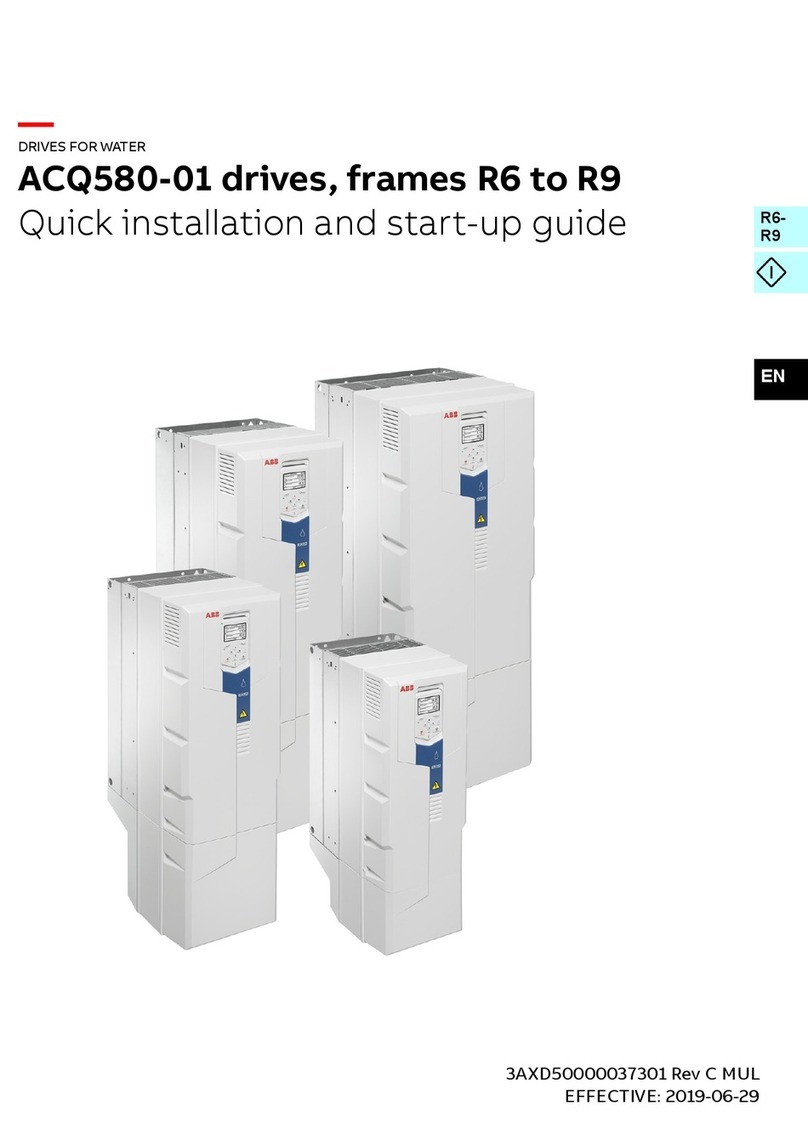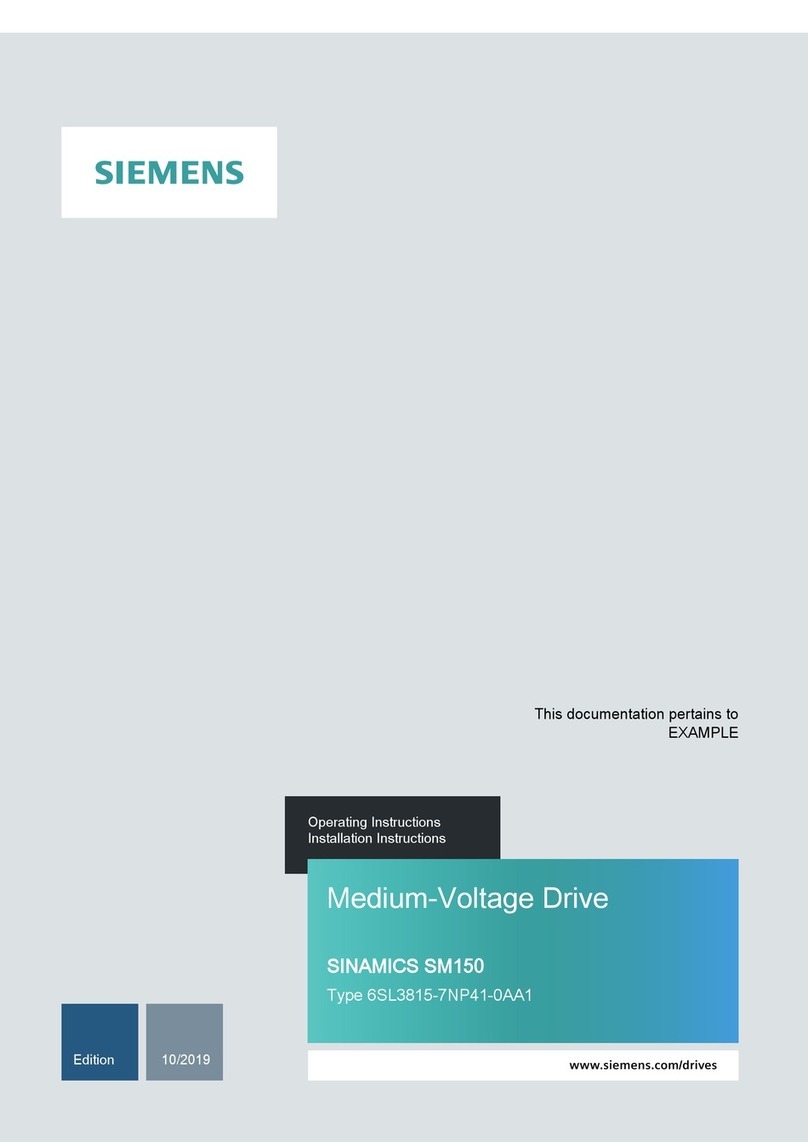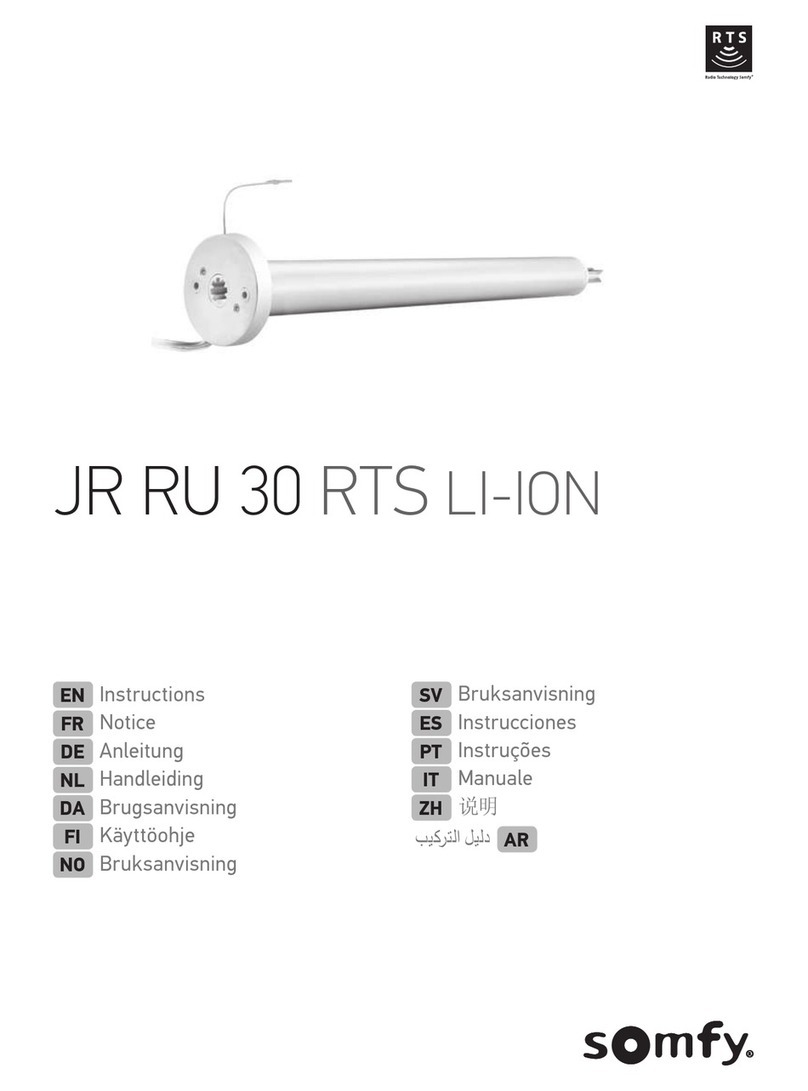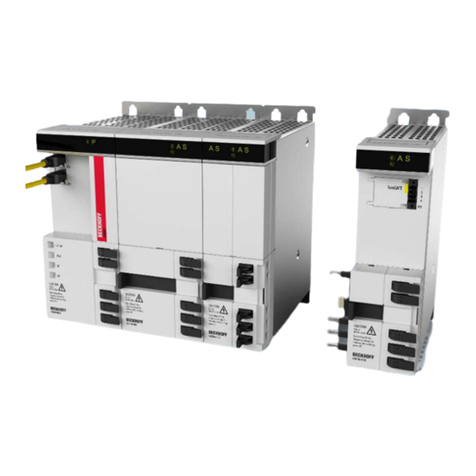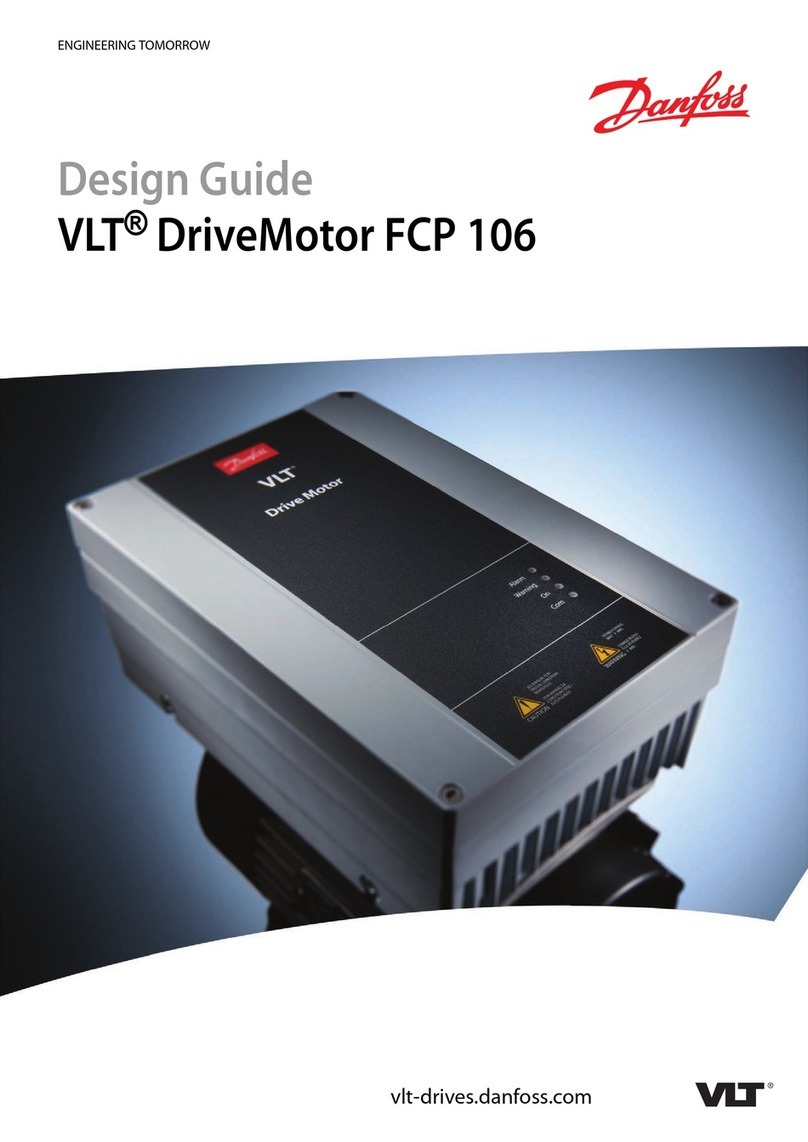
6EDM82MVDG 1 .0 D/ GB/ F
Instructions de sécuritépour l’utisilation de machines àcourant triphasé
(Conformes àla directive Basse Tension 73/23/CEE)
Consignes de sécurité- Machines àcourant triphasé
1. Généralités
Les machines BT comportent des parties dangéreuses sous tension et tournantes, ainsi que, le cas échéant, des surfaces chaudes. L’ensemble des opérations
relatives au transport, au raccordement, àla mise en service et àla maintenance doivent être exécutées par du personnel qualifiéhabilitéet responsable (voir
prEN 50110-1/ VDE 0105; IEC 364). Tout comportement ou maniement inappropriéest susceptible de causer des dommages corporels et matériels graves.
2. Utilisation conforme àla destination
Ces machines BT sont destinées àêtre utilisées dans des installations industrielles et commerciales. Elles répondent aux normes harmonisées de la série EN
60034 (VDE O53O). Leur utilisation dans des atmosphères explosives est interdite, àmoins qu’elles ne soient expressément prévues àcet effet (respecter les
indications supplémentaires). Les machines de degréde protection inférieur ou égal àIP 23 ne doivent en aucun cas être utilisées àl’extérieur. Les machines à
refroidissement par air sont conçues pour des températures ambiantes de -205C à+ 405C et des altitudes inférieures ou égales à1000 m au-dessus du niveau
de la mer. D’éventuelles indications divergentes sur la plaque signalétique doivent être impérativement respectées. Les conditions sur le site doivent correspon-
dre àla totalitédes indications de la plaque signalétique.
Les machines BT sont des composants destinésàêtre incorporés dans des machines au sens de la directive sur les machines 89/392/CEE. Leur mise en
service est interdite tant que la conformitédu produit final avec cette directive n’apasétéétablie (respecter e.a. la norme EN 60204-1).
3. Transport, stockage
D’éventuels dommages constatésaprès la livraison doivent être signalésimmédiatement àl’entreprise de transport; si nécessaire, la mise en service doit être
annulée. Les oeillets de transport vissésdoiventêtre bien serrés. Ils sont dimensionnésenfonctiondupoidsdelamachineBT;parconséquent, aucune charge
supplémentaire ne doit leur être appliquée. En cas de besoin, utiliser des moyens auxiliaires de transport appropriésdedimensionsadéquates (par exemple
guidage par câbles).
Avant la mise en service, enlever les arrêts de transport. Les réutiliser pour d’autres opérations de transport. Lorsque des machines BT sont entreposées, veiller
àce que l’environnement soit sec, exempt de poussières et, dans la mesure du possible, de vibrations (Veff 0,2 mm/s). Danger d’endommagement des paliers
suite àl’arrêtprolongédes machines! Avant la mise en service, mesurer la résistance d’isolement. En cas de valeurs mesurées inférieures ou égales à1kpar
volt de tension assignée, sécher les enroulements.
4. Installation
Veiller àune surface d’appui plane, une bonne fixation des pieds ou, selon le cas, des brides, et àun alignement précis en cas d’accouplement direct. Eviter
que le montage ne soit àl’origine de résonances avec la fréquencederotationetledoubledelafréquence du réseau. Faire tourner le rotor manuellement pour
détecter d’éventuels bruits de frottement anormaux. Contrôlerlesensderotationàl’état non couplé(tenir compte de ce qui est dit sous 5).
Ne monter et démonter les poulies et accouplements qu’à l’aide de dispositifs appropriés(chauffés!) et les protéger contre les contacts par un recouvrement
adéquat. Eviter des tensions de courroie inadmissibles (liste technique).
L’équilibrage de la machine BT est indiquésurlafaceduboutd’arbre ou la plaque signalétique (H = demi-clavette, F = clavette entière). En cas d’équilibrage
par demi-clavette, l’équilibrage de l’accouplement doit également se faire par demi-clavette. Enlever la partie visible et faisant saillie de la clavette.
Le cas échéant, réaliser les raccords de conduits nécessaires aux canalisations d’air. Les modèles avec bout d’arbre dirigévers le haut doivent être recouverts,
lors du montage, pour empêcher la chute de corps étrangers dans le ventilateur. La ventilation ne doit pas être entravée; l’air d’évacuationdelamachine-de
même que celui de groupes voisins - ne doit pas être directement aspiré.
5. Raccordement électrique
Les travaux ne doivent être effectués que par du personnel qualifiéhabilité, la machine étant au repos, séparéedel’alimentation et protégéecontretout
réenclenchement intempestif. Ceci vaut également pour les circuits auxiliaires (par exemple chauffage àl’arrêt). Vérifier l’absencedetension!
Tout dépassement des tolérances selon la EN 60034-1/ VDE 0530,Teil1 (tension + 5%, fréquence + 2 %, forme et symétrie des tensions et courants) a pour
effet une augmentation de l’échauffement et influe sur la compatibilitéélectromagnétique. Respecter les indications de la plaque signalétique ainsi que le
schéma de raccordement dans la boîte de connexion.
Le raccordement doit être réaliséde manière àassurer une liaison électrique durable et sûre (pas de brins effilochés!); utiliser les embout prévus àcet effet.
Réaliser une connexion du conducteur de protection sûre.
Les distances dans l’air minimales entre les parties nues sous tension et entre celles-ci et la terre ne doivent pas être inférieures aux valeurs suivantes: 8 mm à
UN550 V, 10 mm àUN725 V, 14 mm àUN1000 V.
La boîte de connexions ne doit contenir ni corps étrangers, ni saletés ou humidité. Les entrées de câbles non utiliséedoiventêtre obturées, la boîte elle-même
devant être ferméedefaçon àêtre étanche àl’eau et àla poussière. Pour l’essaidemiseenmarchesanséléments entraînants, veiller àce que la clavette soit
immobilisée. Dans le cas des machines BT munies de freins, vérifier le bon état de fonctionnement du frein avant la mise en service de la machine.
6. Fonctionnement
DesvibrationsdevitesseV
eff 3,5 mm/s (PN15 kW) ou 4,5 mm/s (PN> 15kW) respectivement en marche couplésont sans conséquence. En cas de déviation
par rapport au fonctionnement normal - par exemple températures élevées, bruit, vibrations - en rechercher l’origine. Le cas échéant, consulter le constructeur.
Les dispositifs de protection ne doivent pas être mis hors d’état de fonctionner même lors de l’essaidemiseenmarche.Encasdedoute,déconnecter la
machine BT. En présence de poussières abondantes, nettoyer régulièrement les canalisations de ventilation.
Les paliers àdispositif de regraissage doivent être regraissés lorsque la machine BT est en marche. Faire attention àla nature du lubrifiant! Au cas oùles trous
de sortie de graisse seraient obturéspardesbouchons(IP54ducôtéentraînement, IP 23 des côtésentraînement et opposéàl’entraînement), enlever les
bouchons avant la mise en service. Fermer les trous àl’aide de graisse. Les paliers àlubrification permanente (paliers 2Z) doivent être changésaprèsenviron
10.000 heures (2- pôles) ou 20.000 heures (àplus de deux pôles), mais au plus tard après3ou4années, ou encore suivant les indications du constructeur.
